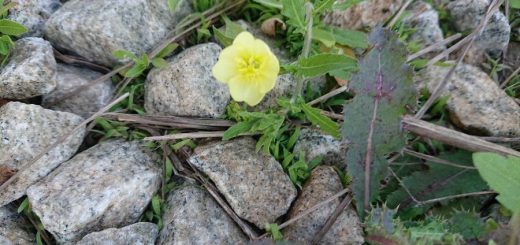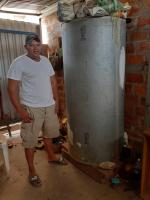Patio Gardening: End Game
Well, I just finish turning the withered and spent remains under and I think I learned quite a bit from the experience. First of all, the performance was less than industrial in scale, but I think its a success in terms of enjoyment, knowledge and a few tasty treats. Yield by plant and miscellaneous notes follow.
Mesculin (Mixed Fancy Lettuce): A real battle to keep these watered but they provided a few tasty salads and seemed to bounce back from predation (me, animals, insects).
Okra: Nothing usable, just some promising buds which remained ornamental. They did grow into some attractive plants, however. Research suggests that they need more space and deeper planters/pots.
Brussel Sprouts: Similar results to the Okra. Damn shamed too, because I love me some Brussel Sprouts.
Artichokes: I didn’t really expect anything here since I was advised that this plant requires two or more seasons to reach maturity. I left this planter undisturbed and may something lurks below for next time.
Garden Beans: I was initially disappointed by the size and numbers of these, but once they got their rhythm down they just kept coming and coming. Under-watering actually seemed to encourage them to put out more beans. After harvesting those, I’d increase their water and they’d respond with another bounty. All told, about 3-4 cans of tasty green beans from two small plants.
Strawberries: Even under the vicious attack of birds and squirrels this was the real winner of the garden. They just kept coming and coming. Although much smaller than the grocery store variety, they were much tastier. And this was just one plant I tried as a whim, wedged into an open planter spot.
Squash: I learned late that these squash do best with cross-fertilization or manual fertilization. Despite my best efforts, manually inseminating vegetables does not seem to come naturally to me. I got one tiny, but attractive squash fruit from the single squash plant hanging from my balcony. Gorgeous flowers though.
Peppers (Hot): This meager sprout grew into a dense attractive bush, but for all its leafy volume it only bore a single, intimidating pepper. Research suggests that it needed more space and very different soil from that it shared with its neighbors.
Carrots: I planted carrots? You’d hardly have known. 🙁
Mystery Planter: Honorable mention to the birdseed catching planter that is still growing god knows what in its tangled mess. Its vegetative schizophrenia amuses me, so I’m leaving it in place for now.
General Notes:
- Space: Hanging baskets and rail planters are great for extending your growing space but I don’t think they cut it for larger plants. I’ll probably use them for herbs, aromatics and ornamentals in the future.
- Soil: One size does not fit all. My planting system was based solely on sunlight needs. I need to take soil and complimentary growing needs into consideration more.
- Water: Given the notorious Georgia heat (comparable to the surface of the Sun), I need a method for keeping more sensitive plants watered regularly. Maybe a drip reservoir. Large planters also tend to dry out slower.





















Consider tandem planting. Some plants need more nitrogen and some plants fix more nitrogen in the soil. I’ve seen guides for which plants complement each other and can be grown together to minimize the need for fertilizers.
I do think you need to try the inverted tomatoes at some point. Tomatoes are often very good container crops. Sadly, mine didn’t bear a single fruit.
So far my meager containers have given one tiny green pepper, two wax beans, and a fair amount of basil.